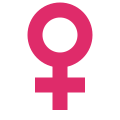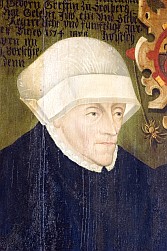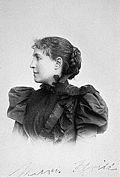Women's suffrage
| Part of a series on |
| Feminism |
|---|
 |
|
History |
|
Concepts |
|
By continent/country |
|
Lists and categories |


Women's suffrage is the right of women to take part in elections. This means two things, which are not necessarily related: First of all, women are allowed to vote for a candidate in an election, and their vote will be treated the same as any other vote. The second thing is that women can be a candidate, and get elected to hold a political office. There's also the idea that all adult citizens should be allowed to vote.
Before the 19th century, a few countries had this idea that all adults should be able to vote, but it only applied to men.
The modern movement for women to gain the right to vote started in France in the late-18th century. The French Republic had been founded after a revolution, and political scientist Antoine Condorcet and activist Olympe de Gouges campaigned for women to be allowed to vote in the national election.
In early cases of women's suffrage, only those women who met certain requirements were given the right to vote in certain kinds of elections. In Sweden, there was conditional women's suffrage during the Age of Liberty (1718–1771).[1] Unmarried women who owned property could vote in New Jersey from 1776 to 1807. In the 1792 election in Sierra Leone, all heads of household—one-third of whom were women—could vote.[2]
Several British colonies recognised women's suffrage before most countries. The female descendants of the Bounty mutineers who lived on Pitcairn Islands could vote from 1838. This right was kept when they were resettled on Norfolk Island in 1856.[3] Women in South Australia were allowed to vote in local elections from 1861, and those on the Isle of Man could vote in parliamentary elections from 1881. In 1893, New Zealand became the first independent country to give all adult women the right to vote in national elections. The women in South Australia got the same right in 1894, and became the first to get the right to stand (run) for seats in parliament.[3][4]
Many countries did the same soon after, following similar battles. Limited voting rights were also gained by women in several Western countries in the late 19th century, including Sweden, Finland and the United Kingdom.[5] Russian Empire was the first European country to introduce women's suffrage, in 1906. It also elected the world's first female members of parliament in its 1907 elections. At that time it was a part of the Russian Empire. In the years before World War I, women in Norway (1913) and Denmark (1915) also won the right to vote, as did women in the other Australian states. In most other Western countries, women's suffrage came at the end of World War I.[6]
Ceylon, now called Sri Lanka, recognised the right in 1931. It elected the world's first female head of government, Sirimavo Bandaranaike, in the country's 1960 elections.[7] Women's suffrage was explicitly recognised as a right by the United Nations in 1979.[8]
Women's Suffrage Media
A Bermuda Police Sergeant confiscates women's suffrage activist Gladys Morrell's table in the 1930s.
Women voting in Kabul at the first presidential election (October 2004) in Afghan history
Related pages
References
- ↑ Åsa Karlsson-Sjögren: Männen, kvinnorna och rösträtten : medborgarskap och representation 1723–1866 ("Men, women and the vote: citizenship and representation 1723–1866") (in Swedish)
- ↑ Simon Schama (2006) Rough Crossings, p. 374.
- ↑ 3.0 3.1 EC (2005-04-13). "Votes for Women". Elections.org.nz. Retrieved 2011-01-08.
- ↑ "Foundingdocs.gov.au". Foundingdocs.gov.au. Archived from the original on 2010-12-03. Retrieved 2011-01-08.
- ↑ Ellen Carol DuBois (1998). Woman Suffrage and Women's Rights. NYU Press. pp. 174–6. ISBN 9780814721162.
- ↑ Bonnie G. Smith, ed. (2008). The Oxford Encyclopedia of Women in World History. Vol. 1. Oxford University Press. p. 171. ISBN 978-0-19-514890-9.
- ↑ Sirimavo Bandaranaike: First woman premier. BBC News. 10 October 2000. http://news.bbc.co.uk/2/hi/south_asia/964914.stm.
- ↑ Convention on the Elimination of All Forms of Discrimination against Women, 1979









